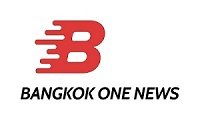The “Boeing 797” won’t be around in the next ten years, so be realistic.
David Calhoun, the chief executive officer of Boeing, said last week in a presentation to investors that the company had no immediate plans to launch a new model. He mentioned the absence of propulsion technologies in the near future that can bring about the improvements needed to make creating a new airframe worthwhile.
Calhoun wants the following jet to be revolutionary rather than rushed through to meet a gap because airplanes frequently stay on the market for many years. He said that in order to advance, Boeing must clear significant obstacles related to fuel efficiency and carbon emission reductions.

Before considering a fleet renewal, according to Boeing, clients would want cost savings of 20% to 30% over current models. However, a sizable chunk is probably going to come from lower fuel usage. Aircraft makers can do this in part by integrating new technology. The lack of propulsion technology that would provide the needed efficiency, according to Boeing CEO Dave Calhoun, was given as the reason:
There won’t be an airplane “if it doesn’t have a sustainability wrapper around it,” “if it can’t fulfill emissions standards,” and “if it can’t give meaningful performance gains.”
At some point in the middle of the next decade, he continued, “We’ll pull the rabbit out of the hat and launch a new airplane.”

How may a futuristic plane look?
Long-running rumors about the fictitious Boeing 797, a new midsize aircraft (NMA). Before there were enough technology advancements to warrant it, Boeing earlier this year stated that no product was currently in development. A narrowbody to compete with the Airbus A321XLR and a twin-aisle jet to replace the Boeing 767 are two of the most often speculated candidates for the next generation of aircraft.
Although it won’t match the A321XLR in range, the future 737 MAX 10, the longest of the MAX series, will virtually match it in seating capacity. When compared to the A321XLR, the aircraft has a maximum range of 3,300 NM. The space left by the single-aisle Boeing 757, which divides the Boeing 737 family from the 787, is another market.
I don’t want to fill a gap in a product line, but Calhoun wants to do something more revolutionary. A product that will completely replace the airplanes that came before it is what I want to create. What projects are still pending?
This week, it was seen that the manufacturer was testing the next-to-last example of its recognizable Boeing 747 “Queen of the Skies.” Under a long-term deal with Atlas Air, the first of two Boeing 747-8 freighters scheduled to arrive at Kuehne+Nagel was sighted on Wednesday doing a fuel test flight.
Additionally, Boeing is currently rushing to certify the additions to the 737 MAX series. Aiming to be certified by the end of the year is the smaller 737 MAX 7. Boeing 737 MAX 10 production will probably be delayed until the summer of 2023 due to certification issues. The company’s trademark livery was on display earlier this month on the first of the type for United Airlines.
Early this year, the Boeing 787 Dreamliner started to be delivered again, and the manufacturer is reportedly thinking about replacing the Boeing 767F with a 787 Freighter.
What possible actions could come next?
In other parts of his remarks, Calhoun emphasized developments in autonomous technology while stating that he did not think hydrogen was a practical way to achieve emission objectives by 2050. ,,…… c,,..,..,… A 90-mile range on a 15-minute charge was promised by the most recent eVTOL aircraft, which was showcased this month.




